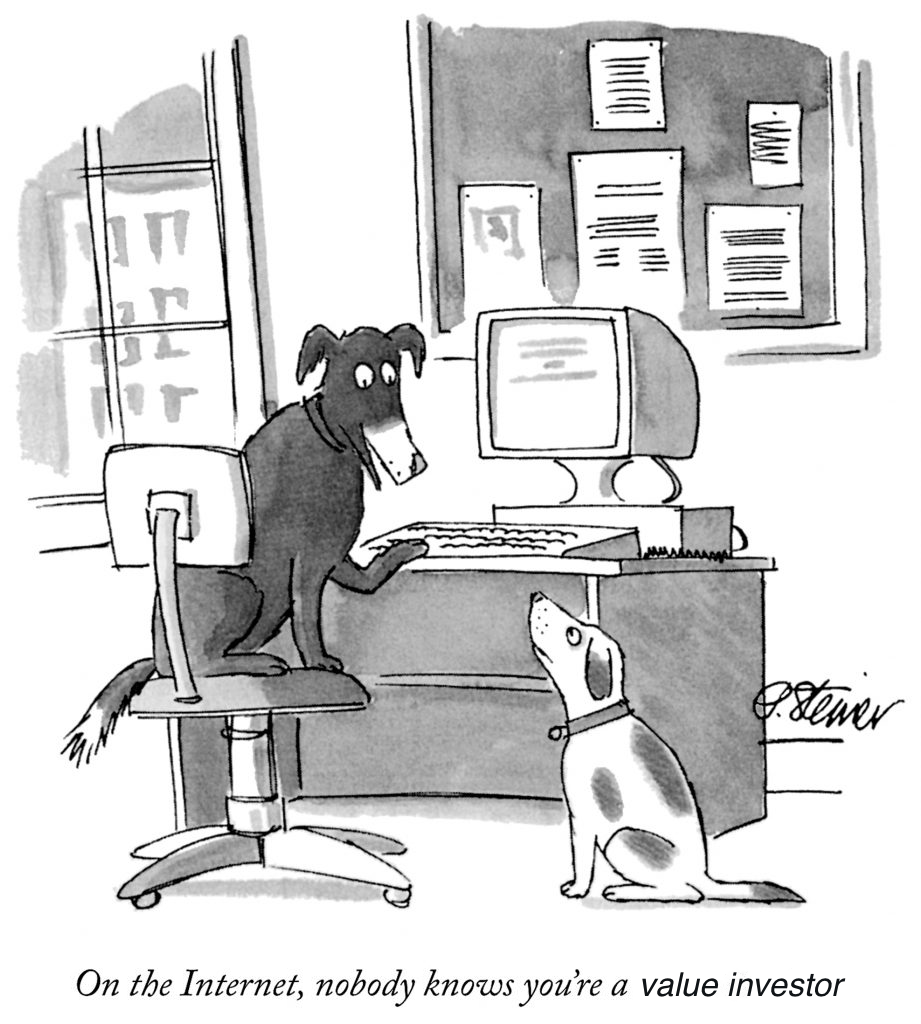120: Rabbits & Assassins, Apple, Twitter Tipping & Super-Follows, Joe Rogan & Spotify, Nvidia, MLPerf Benchmarks, Virtual Machines, EnChroma, NASA, and Bird Harems
"unlike in your head, where smoke and mirrors abound"
Our bodies are amazing things! Check it, everyone!
We use our mouths to talk. We invent, remember and teach entire languages with which to do the talking! And if that fails, we can talk with our hands.
We build planes and boats and cars and spaceships, all by either using our bodies directly, or by using instruments invented by our bodies. We compose beautiful music and tell amazing stories, all with our bodies, these fleshy bags with spooky skeletons inside.
And yet, if we have a severe enough peanut allergy, we can be killed in seconds by a friggin' legume. And hey, 70% of our planet is water, but what happens if we spend too much time in it? We drown. Game over, man!
I used to make fun of Green Lantern for being vulnerable to the color yellow. Then I choked on my orange juice one morning and nearly suffocated.
—T.Rex, Dinosaur Comics (2009)
📝 Writing is thinking.
We do a lot of or thinking implicitly.
Writing is forcing explicit thinking (and I don’t mean R-rated).
If you skip a step or are fuzzy on a detail, it's clear as day on the screen, unlike in your head, where smoke and mirrors abound and magic is real1.
🎧 On podcasting: The human voice is very powerful.
I think we're still finding out just how powerful.
Since the early days of broadcasting (radio, TV), you couldn’t get very niche because it was so expensive to reach people. You had to talk to many many people to make it make sense economically. And by definition, when you’re talking to everybody, you’re talking to no one in particular.
The voice was artificial. Humans never really communicated like that to each other.
Now you can broadcast with your real voice, and your tribe finds you — listeners can hear someone's real voice, real personality... And that personality doesn’t have to come from the 3-4 molds from which most broadcasters were selected for eons.
A real person, pumped straight into your skull, for hundreds of hours over years. It can't help but make you very intimate with someone, at least on some level2.
I think we've evolved in an environment where anyone we heard speaking for that long and that conversationally was a family member or close friend. That has to mean something.
This probably gives a big advantage to those who can produce good quality talk in large quantities, like Rogan. If he did 3 shows per month, I don't think he'd be nearly as big.
I think Patrick O’Shaugnessy’s relatively high pace maintained over years is a big differentiator, both in that it allows more practice hours and iteration cycles to improve, but also because his listeners are getting closer and closer to him on that human-connection level.
It’s not the only factor at play, and doesn’t mean that other problems can’t overwhelm those benefits, but I think it’s powerful.
In fact, I think it’s even more powerful on “ongoing conversation” shows (as opposed to interview shows with different guests each time). I’ve been listening to Accidental Tech Podcast since 2013, and I feel like I know the three hosts very well even though they have no idea who I am. My shared knowledge base with them after hundreds of hours of listening is deep.
🎤 Speaking of podcasting, according to this, “Joe Rogan Search Traffic Has Dropped 40% Since His Spotify Exclusive Began”.
This is based on Google Trends and probably isn’t very accurate, but I wouldn’t be surprised if it was directionally right, and it fits with the rest of the anecdotal data (check the replies in this thread) and the fact that he’s been pretty out of the zeitgeist since then.
Some will say: It was expected, look at what happened to Stern when he moved to Sirius, etc.
Well, maybe. I tend to think that Rogan didn’t expect it. Sirius was a lot more niche in 2004, it had a lot more friction to join — available just in cars, had to have special hardware, etc — than Spotify does today, being available everywhere on everything.
Rogan probably thought "everybody's already on Spotify anyway and if not it’s just a few clicks away, can’t have a big impact". He probably didn’t foresee the other dynamics at play.
I suspect being off of Youtube is the biggest factor, and it’s something that many people cited in the thread I linked above. We can’t know, but what if he was being recommended to 100 million people daily by the Youtube algo. You turn that off, it has to have an impact…
I think my original line still stands: “It's almost like Rogan was banned from social media, except it's self-inflicted”
A lot of Rogan fans also seemed to be mad to be getting lots of ads on his show despite being paid subscribers. Not the best move by Spotify there either…
🛀 Shouldn't Donkey Kong be called Gorilla Kong? Is this a Japanese thing where they just thought it sounded good and nobody there knew what a “donkey” was anyway?
It does have a nice ring to it, but is kinda weird when you think about it.
But screw it, y’know, people should be as weird as they want to. Life’s too boring otherwise. This gorilla can be called Donkey.
Update: Looked up the origin of the name (have an opinion and then do the research… human nature ¯\_(ツ)_/¯ ):
Miyamoto used "donkey" to convey "stubborn" in English; while "Kong" was just a generic term for large apes in Japan, the name Donkey Kong was intended to convey "stubborn ape" to the American audience. When he suggested this name to Nintendo of America, people laughed, but the name stuck.
Makes sense if you know that “Kong” means “large ape” (King Kong makes more sense now too).
It’s like if a crocodile character was called Elephant Croc. (🐘🐊)
💚 🥃 I'm thinking of it kind of like we're sitting in a pub somewhere. I'm talking about various things that interest me or that I've learned about recently. If you like it, once in a while, you send me a scotch to keep me talking and show appreciation. All very casual & civilized:
Investing & Business
Rabbits, Hunters, Assassins, Connaisseurs and Raiders
Gavin Baker wrote a good piece on the book “The Art of Execution” by Lee Freeman-Shor.
Some of my highlights below, but you should read the whole thing:
[Shor analyzed tens of thousands of investments and trades by good investors he had hand-picked and came to this conclusion:]
Shor categorized investors into 5 different “tribes” based on their behavior with respect to losing and profitable positions. Investors dealt with losses by being either “Rabbits,” “Assassins,” or “Hunters.” Investors dealt with gains by either being a “Connoisseur” or a “Raider.” [...]
The “Rabbits” did nothing when they were losing money. They were more interested in “being right than making money” to quote Ned Davis and always defended their losing positions after re-underwriting them. To quote from the book, “They were capable of constantly adjusting their mental story and time frame so that the stock always looked attractive…It never ceased to amaze me how many times the same two villains popped up in the stories told by Rabbits harboring a losing position: Mr. Market (‘The market is being stupid’) and his sidekick Mr. Unlucky (‘It wasn’t my fault, I was unlucky because of XYZ that no one could have foreseen’).
I’ve seen this so often.
I try to learn from when things go wrong, not just from successes. This means trying to understand my own mistakes, but also hunting for interesting mistakes by others.
One thing I do is find situations where the outcome is known, and then go back in time to the archives of discussion forums/blogs and see what people were saying and thinking as things unfolded.
For example, the Salesforce thread on value investing forums. For years the company was the poster child of “overvalued, short it! It doesn’t make any money and issues lots of stock!” and the higher the stock went, the more sure the shorts were because it was becoming “even more overvalued”.
Also the Sears thread, or Valeant, etc.
Back to Baker:
The “Assassins” were those investors who were quick to take losses. The “Assassins” consistently sold losing positions when they were down 20 to 33%. [...] The “Assassins” also generally sold losing positions that were down less than 20% if the positions had not begun to rebound within 6 months after beginning to lose money. [...]
The “Hunters” were those investors who increased positions when they were losing money and averaged down. No statistics were shared on “Hunters,” which was disappointing and I inferred from the book that very few of Shor’s 45 underlying managers were “Hunters.” [...]
Since there was minimal detail on being a “Hunter” in the book, I will say that John Hempton’s post “When do you average down?” is the best thinking I have ever read on the topic. I would paraphrase his thinking as 1) limit your maximum cumulative losses to a set number, 2) do not average down in a business that is highly leveraged and 3) do not average down in a business at risk of technological obsolescence.
You can find Hempton’s post here.
The “Raiders” were those investors who were quick to take gains and sell their winners. Unsurprisingly, this was not a winning strategy. [...] “Rabbits” were also often “Raiders,” which is a terrible combination given the kurtosis in the stock market.
Ok, kudos on the vocabulary, Gavin. I had to look up “kurtosis”:
“the peakedness or flatness of the graph of a frequency distribution especially with respect to the concentration of values near the mean as compared with the normal distribution”
The “Connoisseurs” were the investors who rode their winners. [...] The only trait shared by all of the best investors that I know is that they let their winners run.
I guess I’m pretty ok at that one.
I call it “doing nothing”, but “connoisseur” has a fancier ring to it.
Trivia: In French, it’s Connaisseur. I don’t know why that “a” got flipped to a “o”, but it always confuses me when I spell it ¯\_(ツ)_/¯
the most important takeaway from “The Art of Execution” is that one must always take action when losing significant money — either by buying more or cutting the position as doing nothing and being a “Rabbit” is the worst possible course of action.
That’s a good, actionable lesson. Basically, if a stock falls enough, the market is probably telling you something and you should decide if the market is right (likely), or if you are certain enough that you’re right, in which case you should probably buy more (likely a mistake, but if not, a good way to greatly improve returns on that investment).
Twitter Tipping & Super-Following
I don’t know where Jane Manchun Wong got these screenshots, but assuming they are what Twitter is working on, it’s an interesting implementation of the features that Twitter announced a little while ago.
Twitter is also making their color scheme more monochrome, and is also using their new “Chirp” font
I hope Twitter builds-in some privacy features on the tipping stuff for us pseudonymous folks (both for giving, and receiving — otherwise you’re leaking your identity all over, so what’s the point).
Apple Podcast Subscriptions, I have thoughts…
This is a follow-up to my in-the-moment thoughts about Apple’s announcement that they would offer built-in paid subscription in their podcast app.
Subsequently to the presentation, I learned a bit more about how it works, and it has cooled off my enthusiasm about it.
It’s still cool that they’re offering the option, but here’s a few things that will make it a bad fit for many:
They take 30% of revenue from subs for the first year, and 15% on subsequent years. Per user, not per show, so a user signing up on the 5th year that you’re doing the show would still be 70/30 for the first year of that customer.
Like with the App Store for app developers, Apple owns the customer relationship, not the creator. It goes through Apple’s payment processing and you know very little, if anything, about your customers. This may be helpful for tiny shows who don’t have the resources or sophistication to deal with any of that, but for bigger shows, I suspect this will often be a deal-breaker.
But the biggest deal-breaker: This only works inside of Apple’s Podcast app. Others services like Supercast have built a system around private RSS feeds that are generated for each paying customer, and as such, these feeds are portable and can be used with any podcast player that supports the open podcast ecosystem (so probably not Spotify). While Apple Podcast has a big marketshare (60-70%, I think), there are a lot of other players out there, and most importantly, this breaks the open podcasting model and creates a walled garden.
So in short, my excitement went from 😃 to about 😐…
Science & Technology
25 Minutes to Learn the Basics of Virtual Machines/Hypervisors
This guy is great, I love his enthusiasm.
If you’re not too technical and have always wondered what the fuss is all about on virtualization/virtual machines, this is a good introduction to what it is, how you can play with it on your own computer (convenient link to the free and open-source VirtualBox), and some demonstrations of the benefits.
The Kali Linux distro he’s talking about is interesting:
Kali Linux is a Debian-derived Linux distribution designed for digital forensics and penetration testing.
Kali Linux has around 600 pre-installed penetration-testing programs (tools)
White hat hackers also need powerful tool to protect us from the black hats…
Semi-related: The same guy did a 20-min introduction/tutorial on Notion, the app that I use to take notes for this project.
Colorblind Man Tries EnChroma Glasses for First Time, Science FTW Edition
I first saw this years ago and thought it was great. Maybe you’ve seen videos of deaf people/babies having cochlear implants turned on for the first time? It’s in the same vein…
It’s very wholesome and emotional, plus the tech behind these glasses is quite interesting (more on that below):
Via EnChroma:
Most types of color blindness occur when there is an excessive overlap of the M (green) and L (red) color cones in the eye, causing distinct hues to become indistinguishable [...]
EnChroma develops optical lens technology that selectively filters out wavelengths of light at the precise point where this confusion or excessive overlap of color sensitivity occurs. [...]
Our lens technology increases contrast between the red and green color signals, alleviating symptoms of color blindness
‘first malaria vaccine to show more than 75% efficacy’
The candidate, called R21, is 77% effective against malaria, according to the study, which hasn’t been peer-reviewed. The Serum Institute of India, which is also manufacturing the Oxford-AstraZeneca Plc shot against Covid-19, has agreed to make the malaria vaccine once approved. [...]
The vaccine will next start broad clinical trials in 4,800 children across four African countries. (Source)
Still early days in this, but promising!
You’ve probably seen that chart of the deadliest animals in the world, showing how few people are killed by sharks each year and how many are killed by mosquitoes. Well, it would be great if that chart because anachronistic and a thing that future generations look back on like smallpox.
New Batch of MLPerf Machine-Learning Benchmarks are Out
These are kind of boring because there’s pretty much only Nvidia that submits results. Others know that if they did, they’d trail behind and look bad, so they just take their toys and go home rather than compete.
Still, I guess there’s some use in comparing Nvidia’s current results against past results to see the progress made with the Ampere architecture.
The [Nvidia] A100 was between 17 times to 314 times faster than the best CPU submissions across these tests.
314x!
Hopefully over the coming years more startups will start participating. I’m really curious to see how Tenstorrent does. MLPerf should probably create training benchmarks too for some of the chips that specialize in training and not inferencing.
Interview: Thomas Zurbuchen, NASA Head Honcho
Very interesting interview by interviewer-extraordinaire Shane Parrish:
There’s lots to learn in there about decisions-making, calibrating risk, knowing where to look for problems when everything is pushing you to focus on certain things, managing complex projects and people who are smarter than you are at what they do (yet the responsibility rests with you, not them), etc.
I’m paraphrasing a bit, but I really liked the part where he talked about how he wants the people under him to be more worried than he is, not less; that he needs people to talk to him about all the mistakes that they made or almost made, not try to convince him that things are “low risk” and reassure him.
He’s also clearly very good at always thinking about both the risk and the potential reward of decisions. Can we do X to do more science on this mission? Ok, but at what cost, and what happens to the rest of the mission if this part fails? Are we risking a larger whole for too small a gain? Is the cost too high?
The Arts & History
Just some African jacanas
Look at those feet! On the right is big daddy with his chicks under his wings (literally).
This species has females with harems of males:
The jacana has evolved a highly unusually polyandrous mating system, meaning that one female mates with multiple males and the male alone cares for the chicks. Such a system has evolved due to a combination of two factors: firstly, the lakes that the jacana lives on are so resource-rich that the relative energy expended by the female in producing each egg is effectively negligible. Secondly the jacana, as a bird, lays eggs and eggs can be equally well incubated and cared for by a parent bird of either sex. This means that the rate-limiting factor of the jacana's breeding is the rate at which the males can raise and care for the chicks. Such a system of females forming harems of males is in direct contrast to the more usual system of leks seen in animals such as stags and grouse, where the males compete and display in order to gain harems of females.
The parent that forms part of the harem is almost always the one that ends up caring for the offspring; in this case, each male jacana incubates and rears a nest of chicks. The male African jacana has therefore evolved some remarkable adaptations for parental care, such as the ability to pick up and carry chicks underneath its wings. (Source)
Girl power ✌️ Via Diana Fleischman
In the real-world, you can’t teleport to your destination, you have to cover the full distance between here and there. But when thinking about something, I’ll often skip steps and teleport to where I want to go if I’m not careful to make sure my chain of logic is unbroken.
As I wrote in edition #89:
I've been listening to the ATP podcast since 2013. I've heard 2 hours of conversation (at 2x) every week, so that's something like 715 hours of conversation between these three guys (and I've heard many of them on other podcasts/interviews, and read some of the stuff they've written).
That's a lot. How many hours of conversation have I had with most of my friends during that period? It's likely that only my wife ranks higher in quantity.







